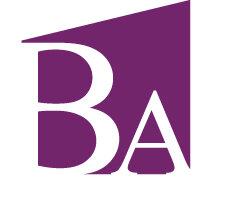Is Your Strategy a STRATEGY? or Just Plans You Hope Will Work?
I would be hard-pressed to find an executive at virtually any organization who would say that they don’t have a strategy. In fact, many leaders get quite defensive when you suggest that what they have just espoused as their strategy is really just a wish list made up of KPI’s they want to achieve.
“Leadership is about crafting an informed hypothesis about success and ensuring that the activities of employees are directed to move that hypothesis forward”
There are two key strategic skills in this statement. The first is ‘informed hypothesis’ while the second is ‘ensuring employee activities.’ A deep understanding of what these two represent along with a lot of practice to get good at it will pay marvelous dividends for your organization.
Ø Less than 10% of organizational leaders exhibit strategic skills (Forbes)
Ø 95% of employees are unaware of, or do not understand the strategy of their organization (Harvard Business Review)
Ø Only 29% of employees say that their leader's vision for the future always seems to be aligned with the organization's (Forbes)
Ø 61% of executives stated that they were not prepared for the strategic challenges they faced upon being appointed to senior leadership roles (Harvard Business Review)
Ø 85% of leadership teams spend less than one hour per month on strategy, and 50% spend no time at all on strategy (Harvard Business Review)
It’s no surprise that many employees feel disconnected, unmotivated, and unable to see how they contribute to the success of their organization. Those employees are the ones who deliver on the Strategy Promise every day or if they have no idea what that Strategy Promise really is, they deliver what they ‘think’ they should and simply hope to be rewarded.
What Constitutes an Informed Hypothesis?
Virtually all of leadership is a hypothesis – it is not a known. You don’t know that your idea will achieve the KPI’s you seek, you simply believe that they will do so. We believe that if our employees do X, Y and Z while we invest in A and B that our organization will achieve its desired performance. Those hypotheses rely on an understanding and focus of the customer and why/how you will encourage them to go past competitors and buy from you.
“We cannot force a customer to do anything”
So, we start where the customer starts:
1) Competitors – It is an absolute necessity that the leadership team has a deep understanding of the Comparison Competitive Set. Potential customers (and even current customers) don’t just consider your offering. They are constantly re-considering the value proposition (something that accelerated during the Covid Pandemic) that is offered and deciding where to buy. There is some stickiness to these moves that enable current relationships with switching costs. However, this is a moving target as competitors are constantly making moves in the market designed to increase their share.
2) Table Stakes Expectations – Probably 80% of strategy is determining and maintaining the table stakes (orthodox) elements of an organization. Determining what is simply expected by customers and employees in your industry is an exercise in the ‘Art’ of Strategy. Most of what is done, most days, by most employees contributes to the standard operations of the business. These activities / outcomes must be done, must be done well, but do not provide a reason for a customer to chose to buy from you. Customers can get these same experiences (or relatively close – we always say +/- 5%) from your competitors. Areas where your organization is frustrating customers by falling short in these table stakes MUST be addressed. This is a significant Strategy Skill!
3) A (or preferably a few) Reason to Choose Your Organization – Why should customers chose to buy from your organization? What are the compelling advantages that you offer as part of your Strategy Promise? These advantages have to be REAL. We need to be able to stand in front of a potential customer and say – “This is why you should choose to buy from us. TEST US!” (And deliver)! Competitive Advantages are the next leg of your Strategy Skillset. What constitutes a competitive advantage is part ‘ART’ and part ‘SCIENCE.’ The art is about practice, openness to being challenged, learning from the past, etc. The science is well-honed in one of the versions of Resource-Based Analysis (VRIN, VRIO, VRIST or simply a modified version of RBA).
Once all this has been completed we can turn our attention to the second big Strategic Skill of ensuring employee’s activities are directed to delivering on our Strategy Promise. Your Strategy Promise is a combination of all 3 areas that we just discussed above. Consistency and Reality are the core deliverables of any organization. If you tell a customer (client) that they should buy from your organization (or use your organization, if nonprofit) because you do everything they are looking for from any of your competitors plus X, Y, and Z that make your offering a TRUE COMPETITIVE ADVANTAGE, then you must deliver on the promise! Every time an employee does not deliver on the promises made, the customer discounts the message being delivered and considers alternatives.
So, we start where the employees start:
1) Understanding Exactly What Leadership Desires – Leaders tend to talk in concepts. It is easier to do so and while some would argue that it allows for creativity, in fact it invites variability. Customer Service | Quality | Innovation | Experience | Compliance | Security | Personal Connections and the list goes on. They sound good, but are so generic that competitors can make the same claims. What subset of these concepts did the leadership determine through RBA were REAL? Each concept like this will have a lot of table stakes expectations that must be done and done well. However it is a subset of resources/capabilities/activities that constitute the competitive advantage. In order for these to be REAL they must be culled out and highlighted for employees. This is often done with a variety of approaches including a Strategy Map, a well-defined Mission (and reason for existence) and a re-structuring that enables the Strategy Promise. Communication of all of these elements is an essential and continuing obligation of management.
2) Activities that Align with our Strategy - Activity Metrics are KEY to Strategy Implementation. Strategy is a journey over a period of time. For strategy to mean anything beyond the words on a page, it has to be measured, and adjustments must be made in those measures to direct employees to do what needs to be done. As stated earlier, the metrics used must examine the activities that we believe will move us closer to knowing that our strategy is actually being delivered. Activity metrics need to be tied directly to the unique strategy (competitive advantages) of the business.
While there are many other aspects of Strategy Design and Implementation, these 5 constitute a critical set of Strategy Skills that should be core to the daily life of every person in leadership. I have provided a number of links to articles / videos with more depth / background on each of these topics.
Photo by Chuck Bamford


